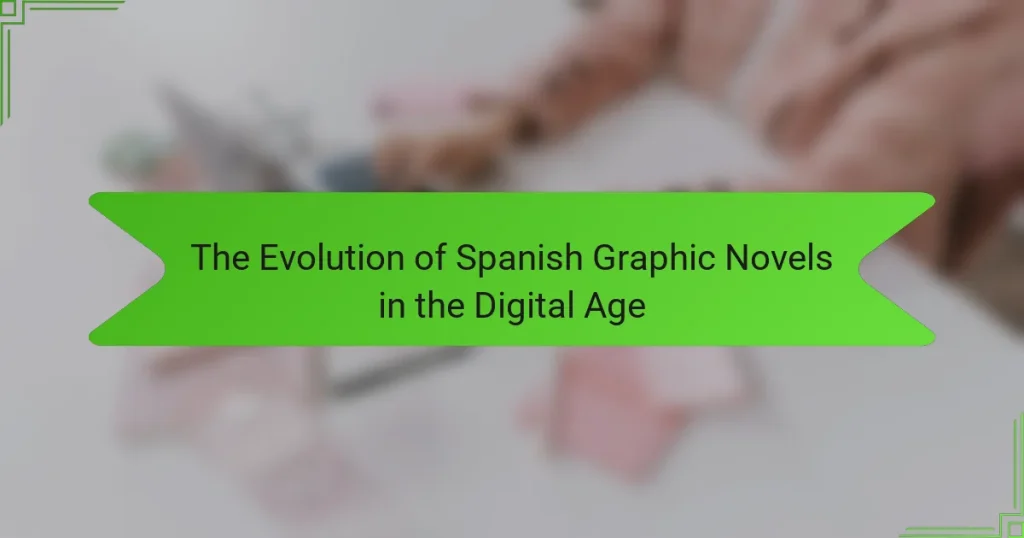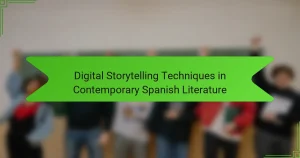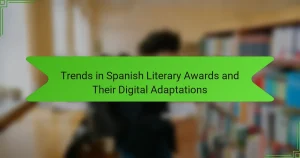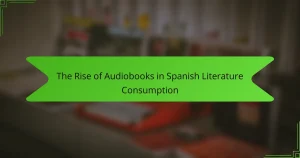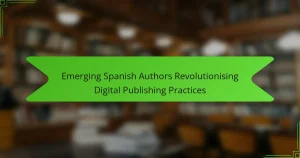The digital age has transformed Spanish graphic novels by enhancing accessibility and diversifying formats. This evolution reflects cultural themes, addresses social issues, and introduces unique storytelling styles. Creators face challenges in adapting to new platforms and monetization strategies. Future trends indicate a shift towards interactive storytelling and augmented reality, positioning Spanish graphic novels for broader engagement.
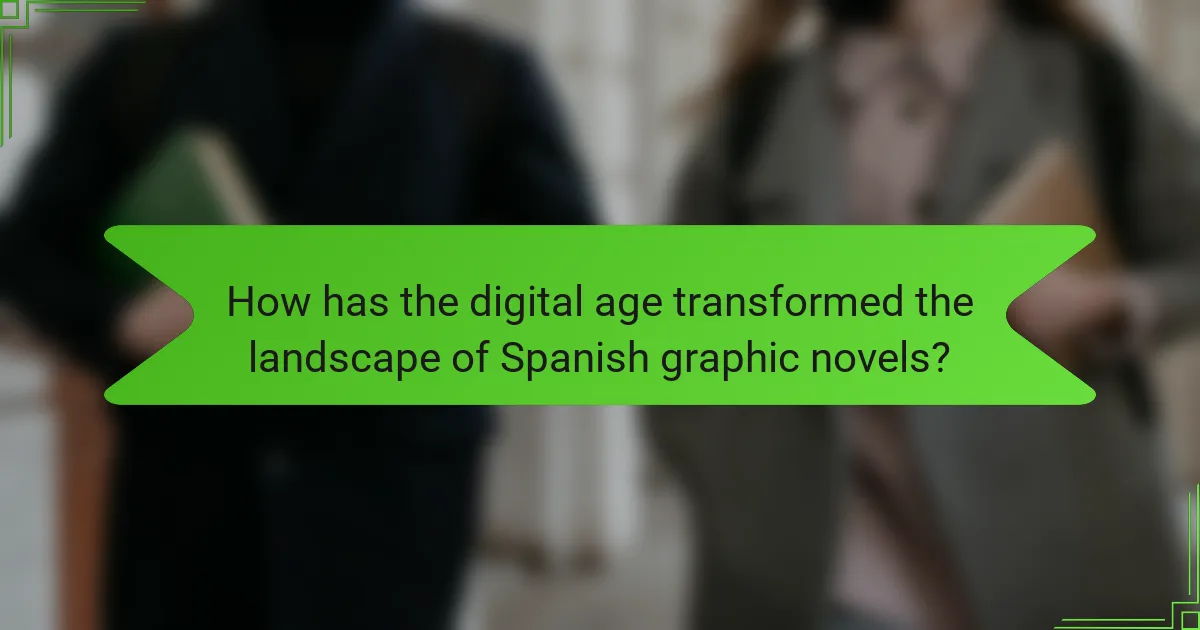
How has the digital age transformed the landscape of Spanish graphic novels?
The digital age has significantly transformed Spanish graphic novels by enhancing accessibility and diversifying formats. Digital platforms allow creators to reach wider audiences, leading to increased visibility for independent artists. Additionally, interactive elements and multimedia integration have enriched storytelling, attracting younger readers. The rise of webcomics has also introduced new narrative styles, reflecting contemporary themes and social issues. As a result, Spanish graphic novels have evolved into a dynamic medium that embraces innovation while preserving cultural heritage.
What are the key technological advancements influencing graphic novel creation and distribution?
Key technological advancements influencing graphic novel creation and distribution include digital tools, online platforms, and social media integration. Digital illustration software allows artists to create intricate designs efficiently. Online distribution platforms enable wider reach, allowing creators to connect directly with audiences. Social media enhances marketing efforts, facilitating community engagement and feedback. These advancements encourage innovation in storytelling and accessibility, shaping the evolution of Spanish graphic novels in the digital age.
Which platforms are most popular for Spanish graphic novels in the digital space?
The most popular platforms for Spanish graphic novels in the digital space include ComiXology, Webtoon, and Tapas. These platforms provide diverse content and accessibility for readers. ComiXology offers a vast library of digital comics, while Webtoon and Tapas focus on webcomics and serialized storytelling. As a result, these platforms cater to the growing interest in Spanish graphic novels, enhancing their reach and engagement.
How do digital formats enhance reader engagement and accessibility?
Digital formats significantly enhance reader engagement and accessibility by providing interactive features and broader distribution. They allow for multimedia integration, which enriches storytelling in Spanish graphic novels. Readers can access content on various devices, increasing reach and convenience. Digital platforms also enable real-time feedback and community interaction, fostering a deeper connection between creators and audiences. Additionally, accessibility features like adjustable text size and audio narration cater to diverse reader needs, making graphic novels more inclusive.

What role do cultural themes play in contemporary Spanish graphic novels?
Cultural themes significantly influence contemporary Spanish graphic novels by reflecting societal issues and identity. These themes explore topics such as immigration, gender roles, and historical memory, resonating with diverse audiences. The integration of digital platforms allows for innovative storytelling techniques, enhancing the visual and narrative experience. As a result, graphic novels serve as a medium for cultural dialogue, bridging traditional narratives with modern perspectives. This evolution highlights the unique attributes of Spanish graphic novels, showcasing their role in contemporary cultural discourse.
How do regional narratives shape the stories told in Spanish graphic novels?
Regional narratives significantly influence the themes and characters in Spanish graphic novels. These narratives reflect local histories, cultural identities, and social issues. For instance, graphic novels from Catalonia often explore themes of nationalism and identity, while those from Andalusia may delve into folklore and tradition. This diversity enriches the storytelling landscape, allowing for a variety of voices and perspectives. Additionally, the digital age has facilitated the dissemination of these regional stories, making them accessible to a broader audience. As a result, the evolution of Spanish graphic novels increasingly showcases the interplay between regional narratives and contemporary issues.
Which cultural events and festivals promote Spanish graphic novels?
Cultural events and festivals significantly promote Spanish graphic novels by providing platforms for creators and audiences. Notable events include the Barcelona International Comic Festival, which showcases both local and international talent, and the Angoulême International Comics Festival, where Spanish works gain global recognition. These festivals facilitate networking, discussions, and workshops that enhance the visibility of Spanish graphic novels, fostering a vibrant community. Additionally, events like Comic Barcelona and the Valencia Comic Festival focus on regional artists, celebrating the unique attributes of Spanish graphic storytelling.
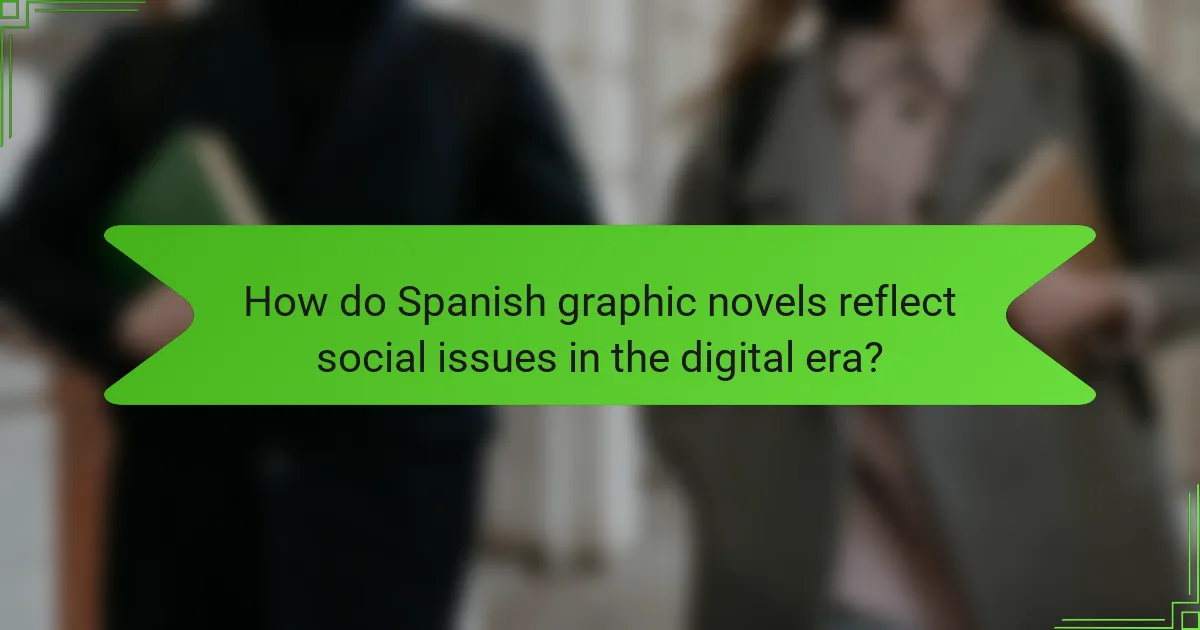
How do Spanish graphic novels reflect social issues in the digital era?
Spanish graphic novels increasingly reflect social issues in the digital era by addressing themes such as identity, migration, and inequality. These narratives utilize digital platforms to reach wider audiences and foster discussions on contemporary challenges. The incorporation of multimedia elements enhances storytelling, allowing for deeper engagement with pressing social topics. Graphic novels like “Los surcos del azar” illustrate the impact of historical events on modern society, emphasizing the importance of memory and representation. As a result, these works contribute significantly to the cultural dialogue surrounding social justice and change in Spain today.
What are the prevalent social themes explored in recent publications?
Recent publications in Spanish graphic novels explore themes of identity, social justice, and technology’s impact on culture. These narratives often reflect contemporary societal issues, such as immigration, gender roles, and environmental concerns. For example, many works address the complexities of multiculturalism and the challenges faced by marginalized communities. Additionally, the integration of digital media allows for innovative storytelling techniques that enhance reader engagement. This evolution signifies a unique attribute of the genre, showcasing its adaptability in a rapidly changing cultural landscape.
How do graphic novels serve as a medium for activism and change?
Graphic novels serve as powerful tools for activism and change by conveying complex social issues through visual storytelling. They engage diverse audiences, making topics accessible and relatable. Spanish graphic novels, particularly in the digital age, have evolved to amplify voices and narratives that challenge societal norms. They often address themes like immigration, identity, and political struggles, fostering awareness and empathy. The unique combination of art and narrative allows creators to present urgent social messages effectively, encouraging readers to reflect and take action.
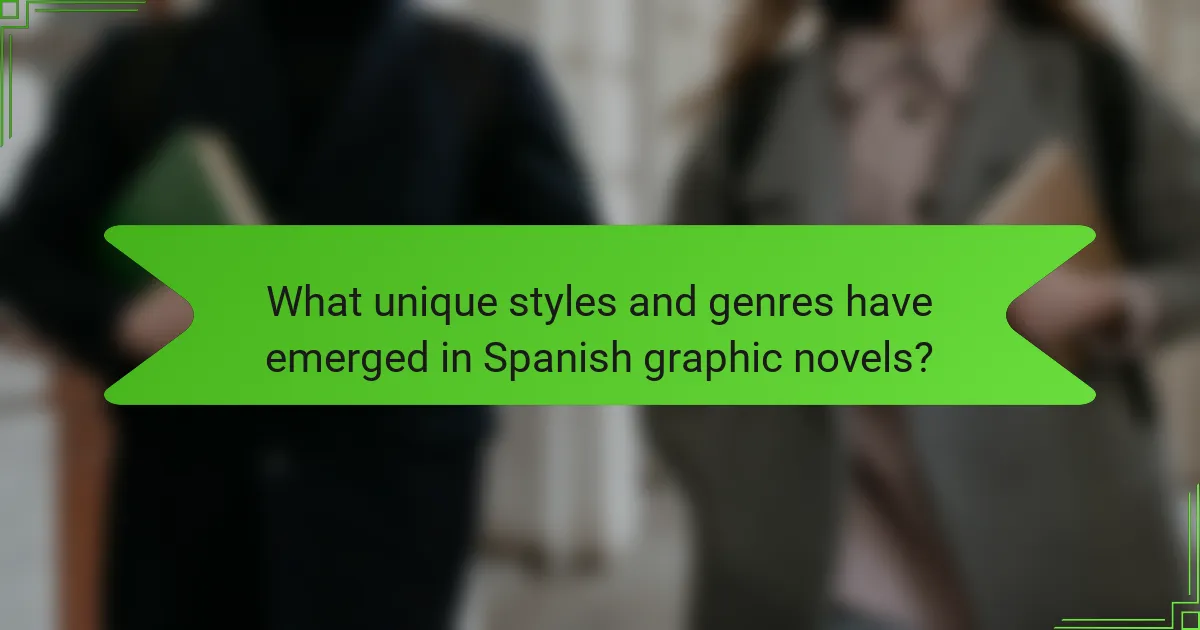
What unique styles and genres have emerged in Spanish graphic novels?
Unique styles and genres in Spanish graphic novels include autobiographical narratives, social commentary, and experimental art forms. These genres reflect cultural identity and current societal issues. Notably, the rise of digital platforms has fostered innovative storytelling techniques and diverse artistic expressions. Graphic novels like “El Héroe” and “La Casa” exemplify this evolution, merging traditional elements with modern themes. As a result, Spanish graphic novels are increasingly recognized for their unique contributions to the global comic scene.
Which artistic movements influence the visual storytelling in these works?
Artistic movements such as surrealism, expressionism, and postmodernism significantly influence visual storytelling in Spanish graphic novels. Surrealism enhances dreamlike imagery, while expressionism conveys emotional depth. Postmodernism introduces intertextuality and challenges traditional narratives, enriching the storytelling landscape. These movements collectively shape the unique visual language and thematic exploration in contemporary works.
How do genre hybrids redefine traditional boundaries within Spanish graphic novels?
Genre hybrids in Spanish graphic novels challenge traditional boundaries by merging diverse storytelling techniques and artistic styles. This evolution reflects cultural shifts and technological advancements, allowing for innovative narratives that resonate with contemporary audiences. The blending of genres, such as combining fantasy with realism, expands thematic exploration and character development. As a result, these hybrids foster new reader experiences, pushing the limits of conventional graphic storytelling.
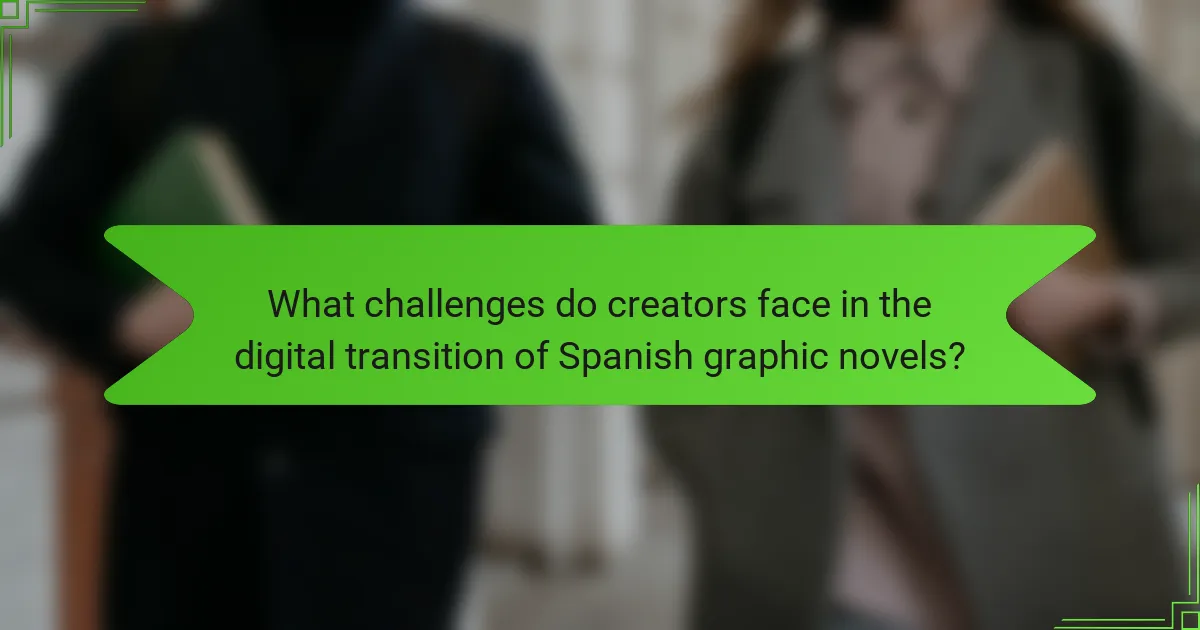
What challenges do creators face in the digital transition of Spanish graphic novels?
Creators face several challenges in the digital transition of Spanish graphic novels, including adapting to new formats and platforms. The shift requires technical skills that many creators may lack, complicating the production process. Additionally, monetization strategies differ significantly in digital spaces, impacting revenue. The saturation of digital content makes it harder for creators to stand out, while copyright issues present legal hurdles. Lastly, audience engagement in a digital format often demands different marketing approaches, adding to the complexity.
How do copyright and intellectual property issues impact digital distribution?
Copyright and intellectual property issues significantly influence digital distribution of Spanish graphic novels. These legal frameworks protect creators’ rights, ensuring fair compensation and control over their work. The rise of digital platforms has complicated enforcement, as piracy and unauthorized distribution threaten revenue streams. Additionally, licensing agreements shape how graphic novels reach audiences, impacting their availability and pricing. As a result, creators must navigate these complexities to maintain their artistic integrity while adapting to the evolving digital landscape.
What financial models are emerging for creators in the digital space?
Emerging financial models for creators in the digital space include subscription services, crowdfunding platforms, and direct sales. These models allow creators to monetize their work effectively while engaging with their audience. Subscription services, like Patreon, provide a steady income stream. Crowdfunding platforms, such as Kickstarter, enable creators to fund projects through community support. Direct sales through personal websites or marketplaces allow for greater profit margins. Each model enhances financial sustainability and empowers creators to thrive in the digital age.
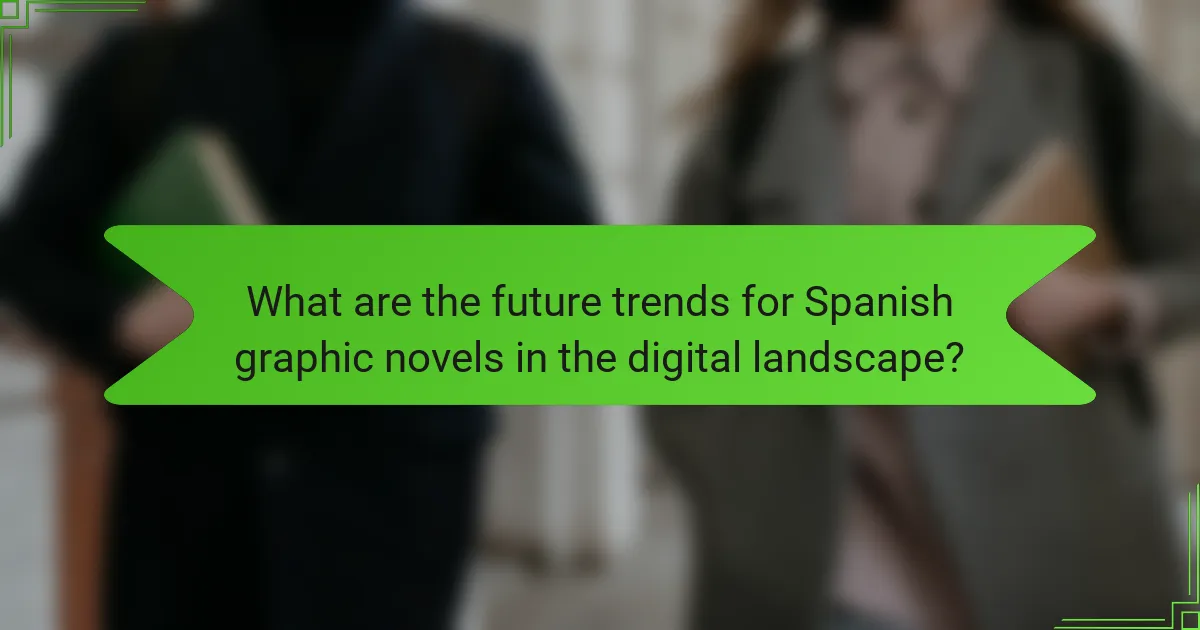
What are the future trends for Spanish graphic novels in the digital landscape?
The future trends for Spanish graphic novels in the digital landscape include increased accessibility, interactive storytelling, and integration with multimedia elements. As digital platforms grow, creators will leverage technology to enhance reader engagement. The rise of webcomics and mobile applications will democratize access, allowing diverse voices to emerge. Additionally, the incorporation of augmented reality features can provide unique experiences, setting Spanish graphic novels apart in a competitive market.
How is audience interaction evolving with the rise of digital platforms?
Audience interaction is evolving significantly due to digital platforms. These platforms enable direct engagement between creators and readers, enhancing feedback loops. Graphic novels in Spain are increasingly utilizing social media for audience connection, allowing fans to influence storytelling and art styles. This shift fosters community building and collaborative content creation. Additionally, digital formats provide accessibility, reaching diverse demographics and expanding readership beyond traditional boundaries.
What innovations are on the horizon for storytelling in graphic novels?
Innovations in storytelling for Spanish graphic novels include enhanced digital interactivity, augmented reality elements, and multimedia integration. These advancements allow for immersive narratives that engage readers beyond traditional formats. As a result, creators can explore unique storytelling techniques that challenge conventional graphic novel structures. Additionally, platforms for self-publishing and crowdfunding are empowering diverse voices, leading to a richer variety of narratives.
What best practices can creators adopt to thrive in the digital age?
Creators can thrive in the digital age by embracing adaptability, collaboration, and audience engagement. They should leverage social media platforms for visibility and feedback. Utilizing digital tools for creation and distribution enhances efficiency. Networking with other creators fosters innovation and shared knowledge. Staying informed about industry trends ensures relevance and competitiveness.
